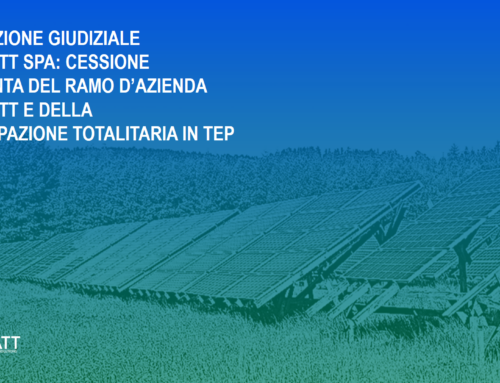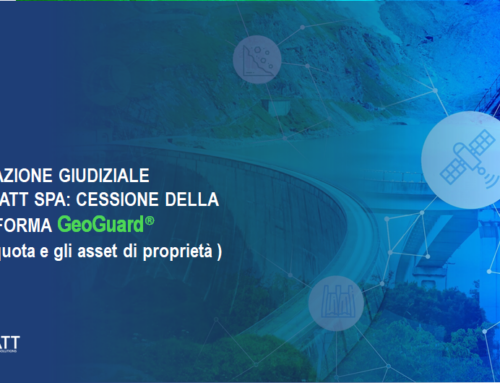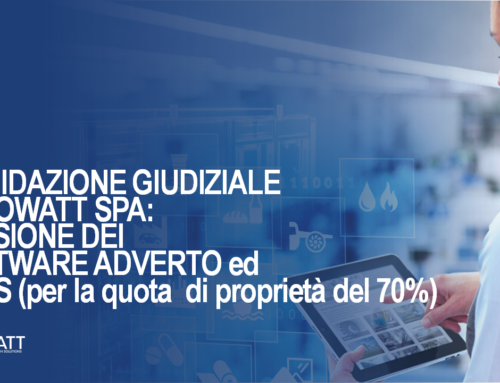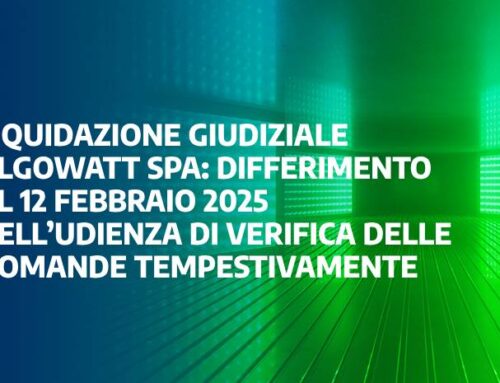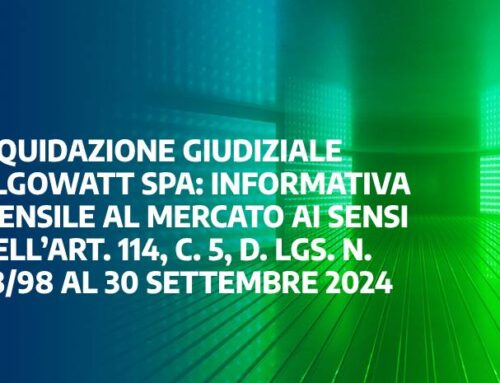- The plant has a processing capacity of 26,400 tons/year
- Reclaimed and renovated an industrial area of around 10,000 square meters, 2,000 of which are covered
- Total investment of Euro 5.5 million
- With two ELT plants in Nera Montoro (TR) and Borgo Val di Taro (PR), TerniEnergia candidates itself to reach a processing capacity of around 20% of the domestic market
TerniEnergia, smart energy company active in the fields of renewable energy, energy efficiency, waste and energy management, listed on the Star segment of the Italian Stock Exchange and part of Italeaf Group, inaugurates today its second plant for the treatment and recovery of End of Life Tires (ELTs), located in the municipality of Borgo Val di Taro (Parma). The event will include Stefano Neri (Chairman and CEO of TerniEnergia), Filippo Frittelli (President of the Province of Parma), Diego Rossi (Mayor of Borgo Val di Taro), Rochus Mecke (Amandus-Kahl General Director) and Giovanni Corbetta (Ecopneus General Director).
The system installed by TerniEnergia, equipped with innovative technologies, determined a total investment of Euro 5.5 million. Through the construction of the plant, TerniEnergia strengthens its leadership position in the domestic market of the industrial material recovery from ELTs, following the sustainability target of reduction/cancellation of the phenomenon of the dispersion of this waste, using the market opportunities represented the regulatory framework, which provides full traceability of the tire at the end of life.
Stefano Neri, Chairman and CEO of TerniEnergia, stated:
“TerniEnergia’s ELTs Recovery Plant, implementing a process of grinding and milling of tires, is a technological alternative to traditional mechanical crushing processes. Thanks to the total capacity of the two treatment plants of Nera Montoro (TR) and Borgo Val di Taro (PR), TerniEnergia has all the prerogatives to get approximately 20% of the total domestic demand in the sector of processing and recovery of ELTs. The strategic location in the center-north of Italy of the new plant makes us also confident of being able to intercept flows of material intended for recycling chain. TerniEnergia is going to subscribe new agreements with commercial operators of the province, for the sale of steel recovered from the tires and with leading Northern Italy industry for the sale of granulated rubber. We want also to strengthen relations and partnerships with leading operators and consortia, as Ecopneus, active in tracing, collection, treatment and final destination of ELTs”.
The mayor of Borgo Val di Taro, Diego Rossi said:
“It’s a great satisfaction for the City Council of Borgo Val di Taro to welcome the opening of the new TerniEnergia’s production site on our territory. A good sign that, despite the many difficulties of the historical moment, that it is possible to find investments that could provide opportunities for the future. The intervention made by TerniEnergia has several positive values. First of all, we targeted a very important environmental recovery: a building that was completely covered with asbestos, in a state of neglect, has been reclaimed and recovered, thus avoiding serious risks to the environment and the territory. In the recovery of this area, there was also a great deal of attention from the investor to local craft and production, immediately involved in the pipeline. Finally, the ability to create new job opportunities in one area of the economy “green”, that we should see more and more committed to combine income generation and preservation of the natural environment“.
The trading authorization of Borgo Val di Taro is valid until January 30, 2026 and renewable, it will steady up to a maximum of 26,400 tons per year (3.5 tons / hour) of ELTs and reducing them to granules dust, separating the rubber from steel and polyester fiber. In this way, from what is often considered a waste product, will be extracted new raw materials ready to be re-used in the recycling chain. The plant, in an industrial and storage areas renewal, occupies a total area of about 10,000 square meters, 2,000 of which are covered, and will employ a minimum of 10 professionals to a maximum of 14.

